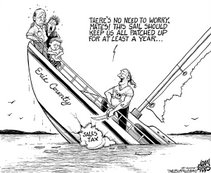Growth in East Asia What We Can and What We Cannot Infer
The spectacular growth of many economies in East Asia over the past 30 years has amazed the economics profession and has evoked a torrent of books and articles attempting to explain the phenomenon. Articles on why the most successful economies of the region Hong Kong, Korea, Singapore, and Taiwan Province of China have grown, to say the least, robustly invariably refer to the phenomenon as "miraculous." When practitioners of the Dismal Science have recourse to a Higher Power, the reader knows that he is in trouble. Confusion is compounded when he discovers that ideological debate has multiplied even further the analyses of this phenomenon. Rather than swelling the torrent of interpretations, this paper sets for itself the modest agenda of reviewing the weightiest arguments in the literature that attempt to identify the reasons for the extraordinary economic growth in East Asia and trying to decide which arguments make sense. The exercise has value because finding the right explanation might suggest how to replicate this success elsewhere and, as a bonus, might also satisfy the reader's urge to solve an engaging intellectual puzzle. It is best if we start with the facts.
Since 1960 Asia, the largest and most populous of the continents, has become richer faster than any other region of the world. Of course, this growth has not occurred at the same pace all over the continent. The western part of Asia grew during this period at about the same rate as the rest of the world, but, as a whole, the eastern half (ten countries: China, Hong Kong, Indonesia, Japan, Korea, Malaysia, the Philippines, Singapore, Taiwan Province of China, and Thailand) turned in a superior performance, although variations in achievement can be observed here too. The worst performer was the Philippines, which grew at about 2 percent a year (in per capita terms), about equal to the average of non-Asian countries. China, Indonesia, Japan, Malaysia, and Thailand did better, achieving growth rates of 3-5 percent. This impressive achievement is, however, still modest compared with the phenomenal growth of Hong Kong, Korea, Singapore, and Taiwan Province of China, known as the "Four Tigers" because of their powerful and intimidating economic performance. The Tigers have had annual growth rates of output per person well in excess of 6 percent. These growth rates, sustained over a 30-year period, are simply amazing. While the average resident of a non-Asian country in 1990 was 72 percent richer than his parents were in 1960, the corresponding figure for the average Korean is no less than 638 percent.
This paper begins by looking at the long-running debate over the nature of growth. Is growth the result for the most part of an accumulation of manpower and machinery, or is it the result of employing the latest technology? The paper then looks at the growth record of the four countries from three other angles: the influence of government intervention, the extent to which investments and exports can be considered the main engines of growth, and the significance for sustained growth of the economic conditions prevailing at the very beginning of the countries' period of extended growth. The paper concludes with a few minimalist observations on possible areas for future study.
The Nature of Growth:Factor Accumulation or Technological Progress
Everyone agrees that the economies of East Asia, and particularly the Four Tigers, have grown spectacularly over the past generation, but nobody seems to agree on why. The debate over why they have grown so well in the past raises difficult questions about regional growth in the future and about the aspiration of countries elsewhere to replicate the East Asian success. The arguments at the center of the debate are based on theoretical notions of growth accounting.
This accounting method deals with three elements that contribute to the production of goods and services: labor, capital, and technology. Labor and capital, known collectively as the "factors of production," refer in this context to the workforce and to the capital goods (buildings, machines, vehicles) that the workforce uses in manufacturing some product or providing some service. Technology refers to all the methods employed by labor and capital to produce a good and depends on the development or acquisition of practical skills to get the job done more quickly and more efficiently. No one denies that all three elements must be present to some degree if an economy is to grow. What is subject to debate is the contribution of the factors of production relative to that of technology. Some believe that increased use of labor and capital explain all growth; others are persuaded that the answer to growth lies in the use of more efficient technology.
Within the growth accounting framework it is possible to describe mathematically, using a simple equation, the contributions of these three elements to the overall production of an economy. By dividing the equation by the number of people in the workforce, one can derive a dynamic equation that shows how output per person increases over time. Such an equation mathematically describes the contribution to higher output of the growth rate of labor participation, of capital employed per person, and of technology (the latter also known as the growth of "total factor productivity"). If applied empirically to specific economies this equation can give a good idea of what proportion of increased output is a result of higher labor participation and better use of capital and what proportion is the result of technological progress.
The traditional formulation of this equation suggests that a significant and sustained rate of technological progress is the only possible way, over the long run, for an economy to achieve a sustained rate of growth in output per person. Why? The labor participation rate can be increased for a while and will increase production, but obviously it cannot increase indefinitely (everybody will ultimately be employed). And more growth in capital than in labor ultimately leads to diminishing returns to capital, resulting in a fall in the growth of output even if capital continues to grow at a constant rate. Therefore, in order to achieve permanent growth, an economy must continuously improve its technology. This kind of growth is called "intensive growth." In contrast to intensive growth, increasing output by increasing inputs of labor and capital (extensive growth) can work only for a limited period, but it cannot last too long.
In a famous study, Solow (1956) conducted a growth accounting exercise such as the one described above. He found that accumulation of capital and an increase in the labor participation rate had a relatively minor effect, while technological progress accounted for most of the growth in output per person. Further studies have reconfirmed the validity of these conclusions. Accordingly, the standard view about the success of the East Asian countries emphasizes the role of technology in their high growth rates and focuses on the fast technological catch-up in these economies. In this view, these economies have succeeded because they learned to use technology faster and more efficiently than their competitors did.A Contrarian View
The collapse of the Soviet Union in about 1990, after years of apparent economic success, caught most people by surprise. This collapse seemed to lend credence to the "extensive growth hypothesis," which argues that the Soviet Union, after many decades of extensive growth, ran into the inevitable diminishing returns effect, just as predicted in the growth accounting framework, because it had relied for its economic growth on a massive accumulation of capital and labor and had been slow to accept innovative technology. These developments in the economy of the Soviet Union served to raise concerns about other economies, including some East Asian countries, that have invested primarily in labor and capital rather than in technology over the past few decades. Krugman (1994) makes the comparison specific:
The newly industrializing countries of Asia, like the Soviet Union of the 1950s, have achieved rapid growth in large part through an astonishing mobilization of resources. Once one accounts for the role of rapidly growing inputs in these countries' growth, one finds little left to explain. Asian growth, like that of the Soviet Union in its high-growth era, seems to be driven by extraordinary growth in inputs like labor and capital rather than by gains in efficiency.
Likewise, in explaining the extraordinary postwar growth of the Four Tigers, Young (1994b) concludes that
one arrives at total factor productivity growth rates, both for the nonagricultural economy and for manufacturing in particular, which are well within the bounds of those experienced by the OECD and Latin American economies over equally long periods of time. While the growth of output and manufacturing exports in the newly industrializing countries of East Asia is virtually unprecedented, the growth of total factor productivity in these countries is not.
In the same vein, Kim and Lau (1994), comparing the sources of economic growth in these countries with those of Germany, France, Japan, the United Kingdom, and the United States, found that
by far the most important source of economic growth in these countries [the Four Tigers] is capital accumulation, accounting for between 48 and 72 percent of their economic growth, in contrast to the case of the Group of Five industrialized countries, in which technical progress has played the most important role, accounting for between 46 and 71 percent of their economic growth.
The results of these studies are not only strikingly different from the view presented earlier of the primacy of technological progress, but they also convey a very pessimistic message. First, economic growth in the Four Tigers is hardly miraculous: it is just the expected outcome of a massive accumulation of labor and capital. Second, the progress of these economies along this growth path for the past 30 years cannot continue. Sooner or later they will experience a dramatic decrease in growth. Third, the societies in these countries made enormous sacrifices of consumption and leisure to achieve these growth rates. Therefore, even if their so-called success can be replicated in other countries, it is probably not wise to do so.
But how conclusive are these results? In fact, conclusions based on these studies are not very robust in that they are sensitive to the specific assumptions of each study.
The main reason for this sensitivity is the difficulty of estimating the rate of growth of capital stock in the East Asian countries during the period under study. Especially in the case of the Four Tigers, for which there are no good data before 1960, it is extremely difficult to estimate the capital stock at that time. To estimate how much capital was available in 1960, dubious assumptions have to be made about the depreciation rate of capital stock and about how much investment flowed in during the years of explosive growth beginning in 1960. What, for example, are the depreciation rates of different types of capital (buildings, industrial machinery, computers)? Are they equal for all countries and for all industries, or are they higher in faster-growing economies? What method is being used to estimate investment flows in the past?
Additional interpretational problems come from trying to estimate the share of national income attributable to capital and the share attributable to labor. Does the same amount of capital produce equal income in all countries and in all industries? Can statistics about the labor participation rate be trusted? Is the amount of effective work proportional to the hours that people work, or does working extra hours lead to diminishing returns? Should different types of labor (factory, office) be summed together? How should human capital be treated?
Because of these unanswered and perhaps unanswerable questions, the results of studies that emphasize the contribution to growth of capital and labor and depreciate that of technology should not be regarded as definitive. They should be viewed as interesting, but only suggestive.Some Counter-Contrarian Evidence
Using conventional parameters and a conventional method of extrapolation, we have conducted a growth accounting exercise for the Four Tigers during 1960-90 along the lines suggested by Young (1994a). The capital stock in these economies is assumed to be 0 in 1900 and subsequently to increase by investment flows less depreciation. The intention of this exercise is to demonstrate the general fragility of conclusions about the nature of the growth process in East Asia.
Figures 1-4 describe the results of this growth accounting exercise. Figure 1 compares the growth rates of output per person of the Four Tigers with those of the rest of the world during 1960-75 and 1975-90. The first four bars in this figure describe the growth rates of the individual Tigers. The fifth bar describes the simple average growth rate of 100 countries, representing the rest of the world (row). The sixth bar represents the mean of the growth rate of the rest of the world plus a 1.96 standard deviation (row + 1.96sd). Growth rates can be regarded as "high" if they are above the row but below row + 1.96sd, "very high" if they are around row + 1.96sd, and "outstanding" if they exceed this value. Figure 1 shows that in this comparison the growth rates of output per person of Hong Kong, Korea, and Taiwan Province of China were very high in the 1960-75 period and outstanding in 1975-90, while the growth rate of Singapore was outstanding during the first period and very high during the second.
Figure 2 describes, in the same manner, the growth rate of labor participation, which was generally high for the Four Tigers and outstanding in the case of Singapore during 1960-75. The first panel in Figure 3 describes the growth rate of capital per person during 1975-90. The rate of capital accumulation was high in Hong Kong, very high in Singapore and Taiwan Province of China, and outstanding in Korea. The second panel of Figure 3 describes the estimated rate of productivity growth during 1975-90: outstanding for Hong Kong, very high for Taiwan Province of China, somewhere between high and very high for Korea, and high for Singapore.
Finally, Figure 4 compares the rates of technological progress (total factor productivity) in the Four Tigers during 1975-90 with those achieved by Japan and the United States during the same period. The first panel of Figure 4 shows that the growth in productivity in all Four Tigers exceeded by far productivity growth in the United States. Three of the four (except Singapore) also exceeded productivity growth in Japan. The second panel of Figure 4 describes the proportion of growth of output per person that is explained by productivity growth. It demonstrates that in the case of the Four Tigers this proportion was not systematically different from those of Japan and the United States: for Hong Kong and Taiwan Province of China it was slightly higher, while in the case of Korea and Singapore it was slightly lower.
What conclusion emerges from this exercise? Although the Four Tigers accumulated capital and increased labor participation at a much faster rate than other economies, the increase in these two factors far from fully explains their exceptional growth rates; growth in productivity attributable to innovative technology also accounts for a significant fraction. In the case of Hong Kong, Korea, and Taiwan Province of China, their growth rates of total factor productivity are as outstanding as their output growth rates. Productivity growth in Singapore is less spectacular, but is still much above the world average. As a percentage of the growth rates of output per person, the productivity growth rates in these four economies are roughly similar to those in Japan and the United States.
A final note on the debate. Just when one seems to have arrived at the above unambiguous and intellectually satisfying conclusions, a nagging doubt recommends checking on how sensitive these findings are to changes in the main parameters of the growth accounting exercise, such as the a parameter (usually at 0.3333) indicating the relative contribution of labor and capital, the depreciation rate, the reference period for extrapolation, the chosen estimation period, and the date for the beginning of capital accumulation. A sensitivity analysis shows that most parameters do not affect the results in any significant way, but that the a parameter and the choice of a specific estimation period are all-important. Small, simultaneous changes in both a and the estimation period give results opposite to the neat conclusions presented above. The findings reported by Young (1994a) regarding the low productivity growth in the Four Tigers were obtained by using a relatively high value for a (0.45) and a specific estimation period (1970-85). These choices, though only slightly different from those in the baseline calculation, together yield an estimate of productivity growth significantly lower than the baseline result. In other words, the debate over the relative contribution to economic growth of factor accumulation versus more efficient technology is still very much alive. Stay tuned.
Role of Public Policy
As the foregoing consideration suggests, the labor and capital accumulation versus total factor productivity debate remains inconclusive. Can other factors shed light on the mystery of growth? One suggestion is to look at the role of government.
Lucas (1988) asked, "Is there some action a government of India could take that would lead the Indian economy to grow like Indonesia's or Egypt's? If so, what, exactly?" The importance of this question can hardly be exaggerated. A usable answer would be the academic equivalent of alchemy, turning the dross of everyday economics into pure gold. Accordingly, the highest ambition of economists who examine the East Asian success is to identify a set of public policies that has promoted economic growth there and gives promise of doing so elsewhere.
It should come as no surprise that opinions vary considerably about the effect of public policy and selective government interventions on stimulating economic growth. Exponents of these opinions fall into three schools. The first emphasizes the primacy of free markets. This school requires only that the government "get the basics right" and opposes any other kind of government intervention. (Getting the basics right means creating an environment in which the economy will thrive by, for example, making sure that the exchange rate reflects the economic fundamentals, that interest rates yield a positive return, that inflation is kept under control, and that taxes are not so burdensome as to discourage economic activity.) The second also embraces the view that the government get the basics right, but in addition advocates selective interventionist policies, particularly in developing countries. The third, somewhat agnostic, school denies the possibility of coming to any conclusion about the effects of public policy or of selective interventions on economic growth. The whole debate, according to this school, gets you nowhere.Free Markets
The first school, basing its views on what is known as the neoclassical approach to economics in general and to economic growth in particular, espouses an underlying belief in classical liberalism. The production possibilities of any economy at any time are determined, according to this view, by the availability of physical resources and of innovative technology. The rate of economic growth in the long run is determined by the rate of technological progress, which is itself a natural outcome of fierce competition in the laissez-faire economic system. Since it regards markets as efficient, this school maintains that government should confine itself to providing public goods (roads and bridges, police protection) and to getting the basics right and should abstain from any further intervention in the market.
This school wishes to restrict the role of government in the economy, but it is not anarchistic. It would assign to government both a microeconomic and a macroeconomic function. In its microeconomic aspect, government should ensure property rights, law and order, and adequate provision of public goods. It should avoid high tax rates, price controls, and other distortions of relative prices. On the macroeconomic side, government should ensure stable and low inflation, avoid excessive budget deficits, promote the integrity of the financial and banking system, provide for open markets, and strive for stable and realistic exchange rates.
Advocates of this view see the success of East Asia as the natural outcome of these cautious policies.Selective Intervention
The revisionist view does not share the neoclassical belief in the efficiency of markets. It asserts that, especially in the poorer countries, markets work imperfectly. In poor countries, production creates externalities (unintended undesirable effects, such as pollution), credit is limited, and the market is a melée in which foreign and domestic firms savage one another and the public through unfair trade practices. Accordingly, the revisionists recommend an activist government that will moderate the excesses of the market and assist the orderly development of the economy by acquiring technology and by allocating funds for useful projects that promise a good rate of return. De Long and Summers (1991) sum up this view: "The government should jump-start the industrialization process by transforming economic structure faster than private entrepreneurs would." Advocates of this view see the success of East Asia as confirming their conviction.
The revisionist view recognizes that the government must often choose firm-specific, highly complex, and nonuniform interventions. In extreme contradiction to the neoclassical doctrine, it allows, and even recommends, the active use of tax policy to manipulate relative prices in the economy. Even the World Bank (1993) report, after emphasizing the necessity of neoclassical "getting the basics right" policies in East Asia, concedes that
these fundamental policies do not tell the entire story. In each of these economies the government also intervened to foster development, often systematically and through multiple channels. Policy interventions took many forms: targeted and subsidized credit to selected industries, low deposit rates and ceilings on borrowing rates to increase profits and retained earnings, protection of domestic import substitutes, subsidies to declining industries, the establishment and financial support of government banks, public investment in applied research, firm- and industry-specific export targets, development of export marketing institutions, and wide sharing of information between public and private sectors.
Agnosticism
A third school, rejecting the claims of both the neoclassicists and the revisionists, claims that we can say nothing meaningful about selective interventions because we cannot properly identify how such policies spur economic growth. There are four reasons for this skepticism.
First, in analyzing "successful" policies, there is clear selection bias. Success has a thousand fathers; failure is an orphan. We know from the outset that the East Asian economies have been successful and that therefore government intervention did not inhibit growth. Consequently interventions in these economies are widely studied. On the other hand, since economists find unsuccessful economies much less attractive to study, they rarely look at government intervention in economies of this type. The selection of interventions to be analyzed is therefore skewed and is not scientifically neutral.
Second, in most cases it is impossible to offer a realistic counterfactual scenario. Would the Hawaiians have invented innovative igloos if it snowed a lot in Honolulu? Would the U.S. economy have grown faster if, like the Soviet Union, its government had turned Communist in 1917? In other words, in analyzing specific interventions, we cannot address the most (and perhaps the only) relevant question, "How fast would these economies have grown if these policies had not been in place?"
Third, public policy in the successful East Asian economies is far from homogeneous. Variation is large in the specific sectors and industries targeted for selective intervention in different countries. The more one examines the policies individual East Asian economies have pursued, the more evident it becomes how different, and indeed contradictory, these policies have been. Rodrik (1994), for example, remarks that the East Asian model encompasses highly interventionist strategies (Japan and Korea), as well as noninterventionist ones (Hong Kong and Thailand); explicitly redistributive policies (Malaysia), as well as distributionally neutral ones (most of the rest); clientelism (Indonesia and Thailand), as well as strong, autonomous states (Japan, Korea, Singapore); emphasis on large conglomerates (Korea), as well as on small, entrepreneurial firms (Taiwan). This range of strategies, all followed more or less successfully, suggests that the search for a simple explanation of the East Asian miracle may well be futile.
Fourth, determining the correct direction of causality is tricky. For instance, in successful economies one usually finds policies that encourage low fiscal deficits and good educational systems. Are these policies responsible for the success of the economy, or is the success of the economy responsible for the policies? Observing that a specific variable is present along with growth does not necessarily constitute proof that the policy generates growth. It might be the other way around. For example, it is much easier for a government to maintain a healthy fiscal position when the economy is growing and tax revenues are on the increase than when the economy is stagnant and demand is strong for deficit-creating social expenditures, such as unemployment compensation. Is a small deficit a result or is it a cause of economic growth? Conventional wisdom relates education to wealth. But which causes which? When an economy is booming, a government can afford generous subsidies for education. Moreover, the demand for education increases when an economy is growing and the population is becoming richer (it is unnecessary for children to start working at age 12). Furthermore, when an economy experiences rapid technological change, the advantage of educated over uneducated workers will be greater than when the economy is stagnant. Therefore there will be an increase in the demand for education by individuals who want a better job in the dynamic economy. In this case, by the way, further education constitutes an advantage for the specific individual relative to other individuals but does not necessarily improve the macroeconomic prospects of the economy.
These examples are presented not to prove that government policies are unimportant, but to make the modest point that we still understand very little about the relationship between public policy and the extraordinary growth rates of the East Asian economies. Other countries should be careful in trying to imitate the East Asian policies. Not understanding the causality between growth and industrialization, in particular, has proved to be a costly mistake for many poor countries that pushed for rapid industrialization in a futile effort to boost economic growth.
Investment and Exports: The Engines of Growth?
Among the many reasons suggested to account for the East Asian success, the investment rate and the export orientation of these economies enjoy enthusiastic support. These are often called "engines of growth" because their strength seems to be pulling the whole economy forward. Moreover, they appear to generate beneficial spillover effects for the rest of the economy. The policy implication of this view is obvious. If the hypothesis is valid, the government should jump start the engines of growth, and if certain sectors continue to contribute to economic progress, while others do not, then government should assist the economy's forward motion by promoting the "good" sectors. Therefore, it should encourage investments and exports, using such policy instruments as direct subsidies or preferential allocation of credit to promote these activities.Main Arguments
The view that investments and exports are engines of growth is based on one empirical and one theoretical argument. The empirical argument is that most East Asian countries that experience phenomenal growth rates also enjoy impressive rates of investment and are successful exporters. The theoretical argument as regards investment is that a high investment rate increases the capital stock (things used to create wealth) and that this can permanently increase the growth rate through economies of scale (e.g., bigger, more efficient factories, larger markets) and other beneficial side effects. In the case of exports, the theoretical argument is that export orientation increases the openness of the economy and, by exposing it to foreign technology and foreign competition, provokes a rapid rate of technological progress.What Is the Direction of Causality?
As stated above, a positive correlation between two variables (where one is found, the other is found) does not prove that one causes the other. In all the East Asian economies one can find export orientation and rapid technological progress. How are export orientation and technological progress related? The theoretical argument suggests that because a country is oriented to exporting, it becomes exposed to foreign technology: export orientation is the cause of technological advance. But the opposite might also be true, that technological advances cause export orientation. Suppose that some industries improve their technology and others do not. It is natural that industries with more advanced technology can compete in international markets and increase the quantity of their exports. In this case, the data will reveal a strong correlation between export performance and the rate of technological progress across industries. Likewise, developing countries that are better in learning and applying advanced foreign technology will enjoy an advantage in world markets and be able to sell their products abroad.
Investment rates (or equivalently, saving rates) appear to have a causal relationship to growth rates (i.e., saving causes growth). Nevertheless, a strong argument of reversed causality can be made even in this case. A study by Carroll and Weil (1994), examining data on savings and investment within households in various countries, found, in fact, that growth causes saving, but saving does not cause growth. Using these data, they discovered that households whose income is on the rise save more than households that experience little or no growth in income, a finding that represents a powerful reinterpretation of the growth-saving relationship. The study also offers from its findings a theoretical explanation that recognizes savers as creatures of habit. Although their incomes may be growing, households will respond slowly to their expanding wealth and will increase their consumption only gradually, with the effect that they save more. In this case, increased saving rates are caused by increased growth rates, and not vice versa.
Initial Conditions
The main empirical argument that a high rate of investment and a concentration on exporting have caused economic growth is the strong positive correlation between these two variables and the rates of growth found in the East Asian economies. In particular, the Four Tigers, the best performing economies in the region, display exceptional investment rates and an extremely high degree of openness (that is, they have a lot of exports and imports relative to the size of the economy). The section above stressed the problem of possible reverse causality between growth and these variables. A further problem is that of averages. Most studies observe a correlation between investment and exporting that are averaged over a period and a rate of growth that is averaged over the same period. Using averages over a period obscures the relation between the variables. A simple partial solution to disentangling the skein of causality is to observe the values of the explanatory variables at the beginning of the period rather than to take their average values over the period. Finding, for example, that economies with high growth rates during the 1960-90 period had very high investment rates or a significant export orientation around 1960 would go a long way toward solving the problem of reverse causality.
An examination of the dynamics of the investment rate and the openness of the economies of Hong Kong, Korea, Singapore, and Taiwan Province of China that compares the 1960 levels of these variables in the Four Tigers with those in other countries does not offer much support for the view that export orientation and investment have been engines of growth. The comparison of the 1960 investment rates of the four economies with the investment rates of 100 other economies clearly rejects the view that investment rates were high in the Four Tigers in 1960. Not only were the investment rates in these economies low in absolute values, but they were very modest even when compared with rates in other countries with a comparable level of income.
The same comparative exercise can be performed to test for openness (imports and exports as a percentage of GDP), taking into consideration such factors as the geographical size of the country, an important variable in determining the degree of openness of an economy. Small countries need to trade more than large countries with big internal markets. Reflecting this, Hong Kong and Singapore show a high degree of openness both during 1960-90 and at the beginning of the same period. On the other hand, Korea and Taiwan Province of China, which are geographically much larger, were not particularly open in 1960, either in absolute terms or relative to other countries of comparable size.
This analysis demonstrates that high investment rates and a large degree of openness were certainly not a general feature of the Four Tigers in 1960. The high investment rates (Korea, Singapore, and Taiwan Province of China) and the high degree of openness (Korea and Taiwan Province of China) were economic features that evolved in these economies only gradually, accompanying rather than preceding the process of economic growth. The conclusion is that the view of these activities as engines of growth does not find much support in the data.Some Positive Evidence Regarding Initial Conditions
Were there other variables that characterized the initial conditions in the East Asian countries and, if so, what contribution might they have made to the subsequent growth of these economies? A study by Rodrik in 1994 examined precisely this question. It was inspired by the view that "In searching for the secrets of the East Asian miracle, the obvious place to look is the set of initial conditions that precede economic take-off." Examining the initial conditions, the study finds that, in certain important respects, they were very different from what one would expect, given the income level of these economies.
Tracing average growth of income per person in 41 countries during 1960-85 back to initial conditions in 1960, Rodrik shows that countries that were poorer, but that had good primary education systems and less inequality of income and land distribution around 1960, grew faster than the others during the following period. The study compares actual data on education and demographics (fertility rate and mortality rate) in eight East Asian countries with the predicted values we would expect, given their initial income, and compared inequality of income and land ownership around 1960 with the same characteristics of other developing countries at a comparable income level. The results show strong evidence that in terms of initial conditions (equality of land and income, school enrollment, high life expectancy and low fertility rates), the eight East Asian countries were significantly better off than countries with similar levels of income. These findings raise the possibility (but do not prove) that these initial conditions may help explain the phenomenal growth rates we observed in East Asia after 1960.
The empirical evidence presented by Rodrik regarding the possible influence of initial conditions in explaining the East Asian miracle is impressive but should be accepted with caution because of the small number of observations. Data on initial conditions in 1960, especially for developing countries, are rare and are of questionable quality. While Rodrik's results suggest a possible explanation for the East Asian success, they are not robust enough to rule out other possibilities. Furthermore, it is not clear what the normative implications of these findings are. For example, suppose that land equality is indeed beneficial for economic growth. Does that mean that land redistribution is a good policy to promote growth? Not necessarily. The redistribution may be extremely damaging by weakening property rights or disrupting political stability, which are obviously essential to growth. Likewise, lowering fertility rates by government decree may be bad for growth, even if low fertility rates are found to be good for growth.
Concluding Remarks
The recent literature on the East Asian growth experience has sparked an intense intellectual debate. This study has attempted to review critically the main arguments in this debate, covering some of its most important dimensions. Inevitably, other important dimensions did not receive fair representation, such as theories about nonmonotonic dynamics of growth (in which middle-income countries can take off and grow faster than either rich or poor countries) and about the importance of the geographical concentration of growth successes (why is East Asia the habitat of all Four Tigers?).
The study does not offer clear and conclusive results nor does it make clear policy recommendations. Its main judgment is that, from a positive point of view, a promising avenue for the explanation of growth performance is the examination of initial conditions. Nevertheless, from a normative point of view, it is far from clear what specific policies governments should pursue, beyond the standard set of policies aimed at getting the basics right.
References
Carroll, Christopher D., and David N. Weil, "Saving and Growth: A Reinterpretation," Carnegie-Rochester Conference Series on Public Policy, Vol. 40 (1994), pp. 133-92.
De Long, J. Bradford, and Lawrence H. Summers , "Equipment Investment and Economic Growth," Quarterly Journal of Economics, No. 106 (May 1991), pp. 445-502.
Kim, Jong-Il, and Lawrence J. Lau, "The Sources of Economic Growth of the East Asian Newly Industrialized Countries," Journal of the Japanese and International Economies, Vol. 8 (1994), pp. 235-71.
Krugman, Paul, "The Myth of Asia's Miracle," Foreign Affairs, Vol. 73 (November-December, 1994), pp. 62-78.
Lucas, Robert E., Jr., "On the Mechanics of Economic Development," Journal of Monetary Economics, No. 22 (July, 1988), pp. 3-42.
Rodrik, Dani, "King Kong Meets Godzilla: The World Bank and the East Asian Miracle," Chapter 1 in Miracle or Design? Lessons From the East Experience, ed. by Albert Fishlow and others (Washington: Overseas Development Council, 1994).
Solow, Robert M., "A Contribution to the Theory of Economic Growth," Quarterly Journal of Economics, No. 70 (1956), pp. 65-94.
World Bank, The East Asian Miracle: Economic Growth and Public Policy, Summary (New York: Oxford University Press, 1993).
Young, Alwyn, "Tale of Two Cities: Factor Accumulation and Technical Change in Hong Kong and Singapore," NBER Economics Annual, (1992) pp. 13-54.
------ "Lessons From the East Asian NICs: A Contrarian View," European Economic Review, No. 38 (April, 1994a), pp. 964-73.
------ "Tyranny of Numbers: Confronting the Statistical Realities of the East Asian Growth Experience," NBER Working Paper, No. 4680 (March, 1994b).
Author Information
Michael Sarel is an economist in Southeast Asia and Pacific Department of the International Monetary Fund. He graduated from the Hebrew University of Jerusalem and received a Ph.D from Harvard University.LILI NA FILA HAVITANGAMANI
Subscribe to:
Post Comments (Atom)




















































2 comments:
[url=http://bargain-coffee-makers.com/deals/Bunn+Coffee+Maker/]Bunn Coffee Maker[/url], [url=http://bargain-coffee-makers.com/shop/Hamilton+Beach+Coffee+Maker/]Hamilton Beach Coffee Maker[/url]. Cuisinart SS-700, Delonghi ESAM3500, Krups XP1020, DeLonghi EN660R Lattissima, [url=http://bargain-coffee-makers.com/shop/Keurig+Coffee+Maker/]Keurig Coffee Maker[/url], Delonghi DC312T, Delonghi ESAM5500M, Delonghi ESAM6600
I'd like to keep growing in Africa. Africa must starting something to produce of goods and services, technology... Regions of Africa should be not only exporters of raw materials and and produce their products. And while you think what would make African countries distracting your thoughts and learn about politics in interesting news https://tuko.co.ke/157806-uhurus-top-political-agent-quits-job-due-jubilee-wrangles.html Share it with others people.
Post a Comment